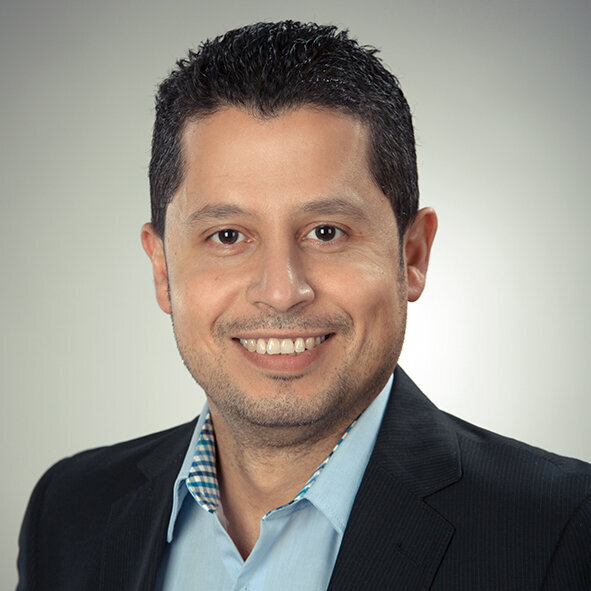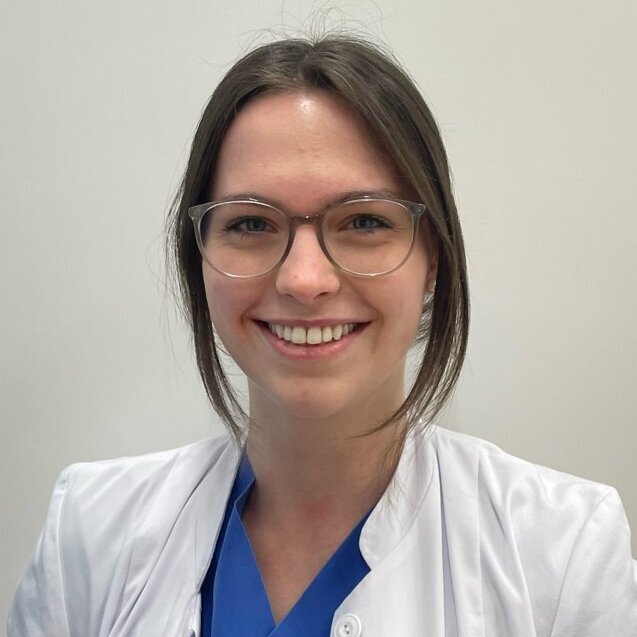
Kontaktinformationen
- Telefon: +49 551 3966380
- E-Mail-Adresse: mohamed.belal(at)med.uni-goettingen.de

Kontaktinformationen
- Telefon: +49 551 3968292
- E-Mail-Adresse: svante.gersch(at)med.uni-goettingen.de

Kontaktinformationen
- Telefon: +49 551 3966340
- E-Mail-Adresse: jarakatharina.hain(at)stud.uni-goettingen.de
Publications
Research papers
Xu X, Tan X, Cui B, Paul NB, Elkenani M, Beuthner BE, Li W, Mohamed BA, Schnelle M, Puls M, Zeisberg EM, Zeisberg M, Beißbarth T, Toischer K, Hasenfuß G. Single-nucleus transcriptomics reveals adrenergic and STAT3 signalling in paradoxical low-flow low-gradient-specific cardiomyocyte subclusters: implications for aortic stenosis pathogenesis and treatment. Cardiovasc Res. 2024;120(13):1505-1507.
Elkenani M, Barallobre-Barreiro J, Schnelle M, Mohamed BA, Beuthner BE, Jacob CF, Paul NB, Yin X, Theofilatos K, Fischer A, Puls M, Zeisberg EM, Shah AM, Mayr M, Hasenfuß G, Toischer K. Cellular and extracellular proteomic profiling of paradoxical low-flow low-gradient aortic stenosis myocardium.Front Cardiovasc Med. 2024;11:1398114.
Ruud M, Frisk M, Melleby AO, Norseng PA, Mohamed BA, Li J, Aronsen JM, Setterberg IE, Jakubiczka J, van Hout I, Coffey S, Shen X, Nygård S, Lunde IG, Tønnessen T, Jones PP, Sjaastad I, Gullestad L, Toischer K, Dahl CP, Christensen G, Louch WE. Regulation of cardiomyocyte t-tubule structure by preload and afterload: Roles in cardiac compensation and decompensation. J Physiol. 2024;602(18):4487-4510.
Eggers A, Ballüer M, Mohamed BA, Nau R, Seele J. A suspension of inactivated bacteria used for vaccination against recurrent urinary tract infections increases the phagocytic activity of murine macrophages. Front Immunol. 2023;14:1180785.
Xu X, Elkenani M, Tan X, Hain JK, Cui B, Schnelle M, Hasenfuss G, Toischer K, Mohamed BA. DNA Methylation Analysis Identifies Novel Epigenetic Loci in Dilated Murine Heart upon Exposure to Volume Overload. Int J Mol Sci. 2023;24(6):5885.
Bengel P, Elkenani M, Beuthner BE, Pietzner M, Mohamed BA, Pollok-Kopp B, Krätzner R, Toischer K, Puls M, Fischer A, Binder L, Hasenfuß G, Schnelle M. Metabolomic Profiling in Patients with Different Hemodynamic Subtypes of Severe Aortic Valve Stenosis. Biomolecules. 2023;13(1):95.
Mohamed BA, Elkenani M, Mobarak S, Marques Rodrigues D, Annamalai K, Schnelle M, Bader M, Hasenfuss G, Toischer K. Hemodynamic stress-induced cardiac remodelling is not modulated by ablation of phosphodiesterase 4D interacting protein.J Cell Mol Med. 2022; 26(16):4440-4452.
Hartmann N, Preuß L, Mohamed BA, Schnelle M, Renner A, Hasenfuß G, Toischer K. Different activation of MAPKs and Akt/GSK3β after preload vs. afterload elevation. ESC Heart Fail. 2022; 9(3):1823-1831.
Elkenani M, Barakat AZ, Held T, Rodrigues DM, Mobarak S, Swarnka S, Adham IM, Mohamed BA. Heat shock protein A4 ablation leads to skeletal muscle myopathy associated with dysregulated autophagy and induced apoptosis. J Transl Med. 2022;20(1):229.
Elkenani M, Nyamsuren G, Toischer K, Adham IM, Mohamed BA. Perturbed differentiation of murine embryonic stem cells upon Pelota deletion due to dysregulated FOXO1/β-catenin signaling. FEBS J 2020 doi: 10.1111/febs.15643.
Nicolas JD, Khan A, Markus A, Mohamed BA, Toischer K, Salditt T, Alves F. X-ray diffraction and second harmonic imaging reveal new insights into structural alterations caused by pressure-overload in murine heart. Sci Rep 2020;10:19317.
Loescher CM, Breitkreuz M, Li Y, Nickel A, Unger A, Dietl A, Schmidt A, Mohamed BA, Kötter S, Schmitt JP, Krüger M, Krüger M, Toischer K, Maack C, Leichert LI, Hamdani N, Linke WA. Regulation of titin-based cardiac stiffness by unfolded domain oxidation (UnDOx). Proc Natl Acad Sci U S A 2020;117:24545-24556.
Khadjeh S, Hindmarsh V, Weber F, Cyganek L, Vidal RO, Torkieh S, Streckfuss-Bömeke K, Lbik D, Tiburcy M, Mohamed BA, Bonn S, Toischer K, Hasenfuss G. CRISPLD1: a novel conserved target in the transition to human heart failure. Basic Res Cardiol 2020;115:27.
Berulava T, Buchholz E, Elerdashvili V, Pena T, Islam MR, Lbik D, Mohamed BA, Renner A, von Lewinski D, Sacherer M, Bohnsack KE, Bohnsack MT, Jain G, Capece V, Cleve N, Burkhardt S, Hasenfuss G, Fischer A, Toischer K. Changes in m6A RNA methylation contribute to heart failure progression by modulating translation. Eur J Heart Fail 2020;22:54-66.
Mohamed BA, Elkenani M, Jakubiczka-Smorag J, Buchholz E, Koszewa S, Lbik D, Schnelle M, Hasenfuss G, Toischer K. Genetic deletion of calcium/calmodulin-dependent protein kinase type II delta does not mitigate adverse myocardial remodeling in volume-overloaded hearts. Sci Rep 2019;9:9889.
Schnelle M, Sawyer I, Anilkumar N, Mohamed BA, Richards DA, Toischer K, Zhang M, Catibog N, Sawyer G, Mongue-Din H, Schröder K, Hasenfuss G, Shah AM. NADPH oxidase-4 promotes eccentric cardiac hypertrophy in response to volume overload. Cardiovasc Res 2019:cvz331.
Jochmann S, Elkenani M, Mohamed BA, Buchholz E, Lbik D, Binder L, Lorenz K, Shah AM, Hasenfuß G, Toischer K, Schnelle M. Assessing the role of extracellular signal-regulated kinases 1 and 2 in volume overload-induced cardiac remodelling.ESC Heart Fail 2019;6:1015-1026.
Mohamed BA, Hartmann N, Tirilomis P, Sekeres K, Li W, Neef S, Richter C, Zeisberg EM, Kattner L, Didié M, Guan K, Schmitto JD, Lehnart SE, Luther S, Voigt N, Seidler T, Sossalla S, Hasenfuss G, Toischer K. Sarcoplasmic reticulum calcium leak contributes to arrhythmia but not to heart failure progression. Sci Transl Med 2018;10:eaan0724.
Toischer K, Zhu W, Hünlich M, Mohamed BA, Khadjeh S, Reuter SP, Schäfer K, Ramanujam D, Engelhardt S, Field LJ, Hasenfuss G. Cardiomyocyte proliferation prevents failure in pressure overload but not volume overload. J Clin Invest 2017;127:4285-4296.
Mohamed BA, Schnelle M, Khadjeh S, Lbik D, Herwig M, Linke WA, Hasenfuss G, Toischer K.Molecular and structural transition mechanisms in long-term volume overload. Eur J Heart Fail 2016;18:362-71.
Mohamed BA, Asif AR, Schnelle M, Qasim M, Khadjeh S, Lbik D, Schott P, Hasenfuss G, Toischer K. Proteomic analysis of short-term preload-induced eccentric cardiac hypertrophy. J Transl Med 2016;14:149.
Mohamed BA, Barakat AZ, Held T, Elkenani M, Mühlfeld C, Männer J, Adham IM. Respiratory distress and early neonatal lethality in hspa4l/hspa4 double-mutant mice. Am J Respir Cell Mol Biol 2014;50:817-24.
Mohamed BA, Barakat AZ, Zimmermann WH, Bittner RE, Mühlfeld C, Hünlich M, Engel W, Maier LS, Adham IM. Targeted disruption of Hspa4 gene leads to cardiac hypertrophy and fibrosis. J Mol Cell Cardiol 2012;53:459-468.
Burnicka-Turek O*, Mohamed BA*, Shirneshan K*, Thanasupawat T, Hombach-Klonisch S, Klonisch T, Adham IM. INSL5-deficient mice display an alteration in glucose homeostasis and an impaired fertility. Endocrinology 2012;153:4655-4665.
Held T, Barakat AZ, Mohamed BA, Paprotta I, Meinhardt A, Engel W, Adham IM. Heat-shock protein HSPA4 is required for progression of spermatogenesis. Reproduction 2011;142:133-144.
Books
Elkenani M, Mohamed BA. Murine Embryonic Stem Cell Culture, Self-Renewal, and Differentiation. Methods Mol Biol. 2022; 2520:265-273.


